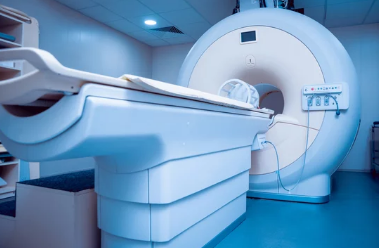Magnetic Resonance Imaging (MRI) has transformed the way doctors diagnose and treat cancer. While many patients know MRI as a tool for detecting tumors, its role extends beyond diagnosis. Increasingly, MRI is being used to guide cancer surgery, helping surgeons plan procedures with pinpoint accuracy and even assisting during operations in real time.
For patients facing surgery, understanding how MRI contributes to surgical planning and outcomes can provide confidence and reassurance. This article explores the growing importance of MRI in cancer surgery, from pre-surgical planning to intraoperative imaging and post-surgical evaluation.
Why Precision Matters in Cancer Surgery
Cancer surgery often requires a delicate balance. The surgeon’s goal is to:
- Remove the tumor completely (achieve “clear margins”)
- Preserve as much healthy tissue as possible
- Reduce the risk of recurrence
- Maintain the patient’s quality of life
Without precise imaging, achieving all these goals can be challenging. That’s where MRI comes in.
Pre-Surgical Planning with MRI
Before surgery, MRI provides surgeons with a detailed roadmap of the tumor and surrounding structures. This allows for careful planning that reduces risks and improves outcomes.
1. Defining Tumor Size and Borders
MRI offers highly detailed images of soft tissues, making it easier to distinguish between cancerous and healthy tissue. For example:
- Breast cancer surgery: MRI helps detect additional small tumors not visible on mammograms.
- Brain surgery: MRI maps out tumor boundaries, vital for avoiding damage to healthy brain tissue.
2. Assessing Cancer Spread
Surgeons use MRI to check whether cancer has invaded nearby organs, lymph nodes, or blood vessels, which affects the surgical approach.
3. Functional MRI (fMRI)
In cases like brain surgery, fMRI shows areas responsible for speech, movement, and vision. This ensures surgeons avoid critical brain regions during tumor removal.
Intraoperative MRI: Imaging During Surgery
One of the most exciting advances in cancer treatment is intraoperative MRI (iMRI)—MRI performed during surgery. This allows surgeons to:
- Confirm tumor removal in real time
- Check surgical margins to ensure no cancerous tissue is left behind
- Adjust the procedure immediately if new findings appear
Benefits of iMRI
- Increased precision in removing tumors
- Reduced need for repeat surgeries
- Improved survival rates and patient outcomes
Example: In brain tumor surgery, iMRI helps surgeons verify that the maximum tumor tissue has been removed without damaging critical brain areas.
Post-Surgical MRI for Follow-Up
After surgery, MRI continues to play an important role in patient care:
- Checking for residual cancer that might remain after surgery
- Detecting recurrence early before symptoms appear
- Monitoring healing and ensuring no post-surgical complications
Types of Cancer Where MRI Guides Surgery
MRI is especially valuable in surgeries involving:
- Brain tumors: To identify tumor margins and avoid damage to healthy brain function.
- Breast cancer: To locate small or hidden tumors and guide lumpectomy procedures.
- Prostate cancer: Multiparametric MRI helps plan nerve-sparing surgeries.
- Liver and pancreatic cancers: To map blood vessels and plan complex operations.
- Spinal tumors: To visualize delicate structures and ensure safe removal.
Advantages of MRI-Guided Cancer Surgery
- Higher surgical accuracy compared to traditional imaging
- Better preservation of healthy tissues
- Lower risk of incomplete tumor removal
- Reduced recurrence rates
- Improved quality of life due to fewer complications
Challenges and Limitations
While powerful, MRI-guided surgery has some limitations:
- Availability: iMRI machines are not widely available due to cost and infrastructure needs.
- Longer surgery times: Setting up MRI during surgery can extend the operation.
- Cost: MRI-guided procedures are often more expensive.
- Compatibility issues: Surgical tools must be MRI-safe, which limits options.
Future of MRI in Cancer Surgery
The future is promising. Researchers are combining MRI with technologies like:
- Robotics: Allowing precise, MRI-guided robotic surgeries.
- Artificial intelligence (AI): Enhancing MRI analysis for better decision-making.
- Real-time 3D visualization: Giving surgeons even more control during operations.
These innovations may make MRI-guided surgery faster, safer, and more widely accessible in the years ahead.
Final Thoughts
For cancer patients, MRI is more than just a diagnostic tool—it is a vital partner in surgery. By providing detailed images before, during, and after operations, MRI helps surgeons remove tumors with greater accuracy, minimize risks, and improve long-term outcomes.
Although not available in every hospital, MRI-guided cancer surgery represents a major step forward in precision medicine, giving patients new hope for safer and more effective treatment.
Also Read :
